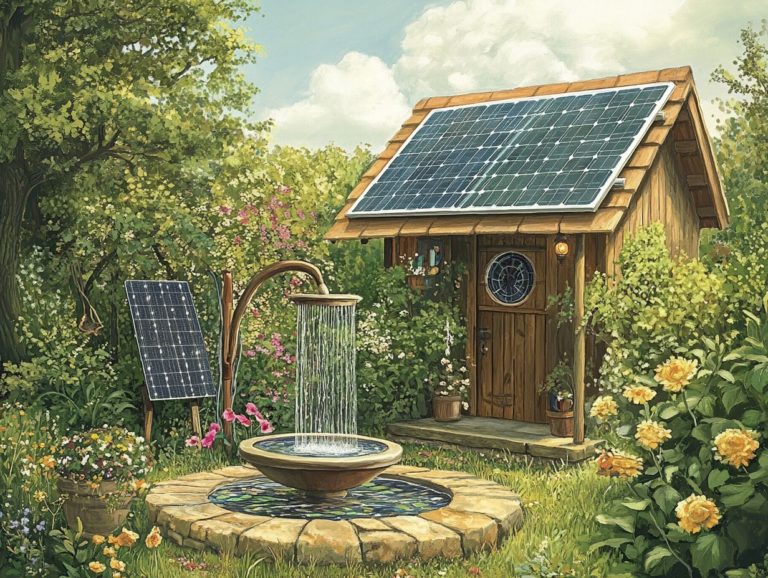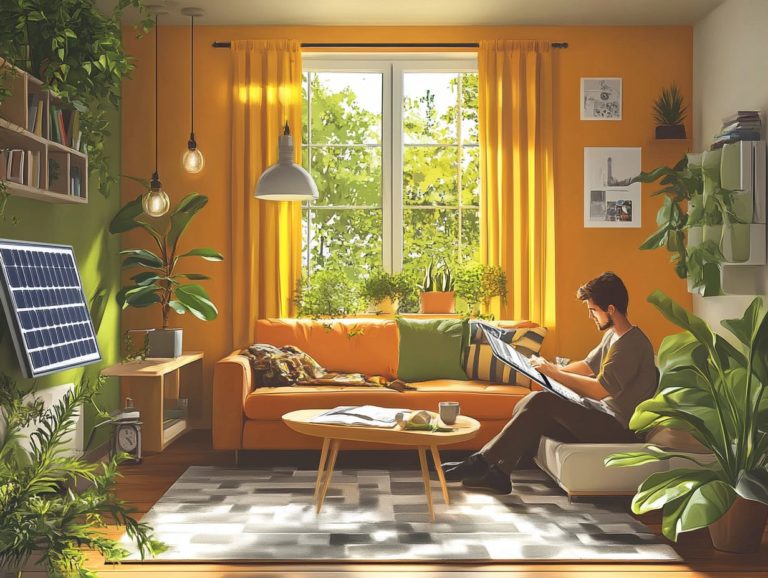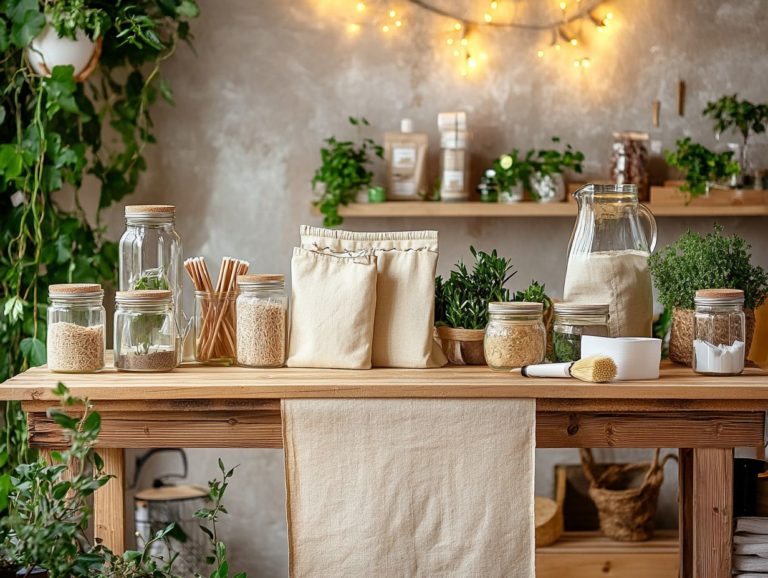DIY Passive Solar Heating Techniques
Passive solar heating presents an effective method for utilizing the sun’s energy to warm your home without the need for conventional heating systems or backup heaters.
By embracing this innovative approach, you can enjoy benefits such as enhanced energy efficiency and potential cost savings. To optimize your design, consider essential principles that maximize sun exposure and heat absorption.
Practical DIY techniques, including the installation of passive solar windows, thermal curtains, solar air heaters, and batch heaters, play a pivotal role in your setup.
Thoughtful installation considerations, such as proper insulation and the use of thermal mass materials like concrete or stone, empower you to fully harness the advantages of this sustainable solution. This transformation can turn your living space into a cozy retreat while reducing your carbon footprint.
Contents
- Key Takeaways:
- Benefits of Passive Solar Heating
- Passive Solar Design Principles
- DIY Passive Solar Heating Techniques
- Considerations and Tips for Installation and Maintenance
- Frequently Asked Questions
- 1. What is DIY Passive Solar Heating?
- 2. How does DIY Passive Solar Heating work?
- 3. What are some common materials used in DIY Passive Solar Heating techniques?
- 4. Is DIY Passive Solar Heating suitable for all climates, including winter months?
- 5. Are there any drawbacks to DIY Passive Solar Heating techniques?
- 6. Can I incorporate DIY Passive Solar Heating techniques into an existing home?
Key Takeaways:

- Passive solar heating uses natural sunlight and thermal mass for energy efficiency and cost savings.
- Maximizing sun exposure and using thermal mass are essential for effective passive solar design.
- DIY solutions like solar windows and thermal curtains are easy to implement in homes.
What is Passive Solar Heating?
Passive solar heating is an advanced design approach that allows you to harness solar energy for heating through natural processes, all without relying on mechanical systems. By utilizing materials that absorb, store, and distribute heat from sunlight, this method proves to be an efficient choice for homes across various climates, particularly in sun-drenched areas like Davis, California.
This technology often incorporates elements such as insulated tanks, thermal mass, and strategically positioned windows to maximize heat collection while significantly reducing your heating costs. Notably, solar water heaters and batch heaters can be part of this design.
Focusing on the thoughtful configuration of your building, passive solar design emphasizes energy efficiency and reduces your reliance on conventional heating systems, which tend to use a lot of fossil fuels or electricity. The incorporation of thermal mass like concrete or stone is pivotal, as it helps stabilize indoor temperatures by absorbing heat during the day and releasing it slowly at night. For homeowners looking to enhance energy efficiency, exploring DIY energy-saving techniques can be incredibly beneficial.
This principle can lead to lower energy bills and a more comfortable living environment in your home. Enhancing insulation around your structure optimizes performance, ensuring that valuable heat is retained where it belongs. This holistic approach illustrates how modern homes can achieve self-sufficiency in maintaining comfortable climates year-round, marking a meaningful step toward sustainable living.
Benefits of Passive Solar Heating
Discover the amazing benefits of passive solar heating that can transform your home, establishing it as a top choice for those committed to sustainable living, particularly in contemporary architectural designs and housing. Various applications of this technology can be seen in different climates and construction methods.
By harnessing the sun’s natural energy, passive solar heating systems can markedly improve energy efficiency, resulting in significant cost savings over time.
As you reduce your dependence on traditional heating methods, you embrace a more eco-friendly lifestyle that not only lowers your carbon footprint but also champions the use of renewable energy sources. This transition promotes environmental sustainability.
Energy Efficiency and Cost Savings
Energy efficiency and cost savings stand out as two of the most enticing reasons to explore passive solar heating systems. By expertly harnessing sunlight and utilizing materials that store heat in your building design, you can significantly cut down on energy consumption. This shift reduces your reliance on traditional heating methods. It also leads to lower utility bills and provides substantial long-term financial benefits.
Imagine cutting your energy bills by up to 30% each year with passive solar heating! Research shows that incorporating these techniques, such as creating homemade solar heating panels, can yield impressive energy savings compared to conventional methods. In regions with chilly winters, these systems offer essential warmth without the hefty operating costs tied to gas and electric heaters. Conversely, in warmer climates, passive solar strategies help cool your buildings naturally, alleviating the burden on air conditioning systems.
As more homeowners become aware of the environmental and economic advantages, embracing these systems fosters sustainability and enhances property value over time.
Passive Solar Design Principles
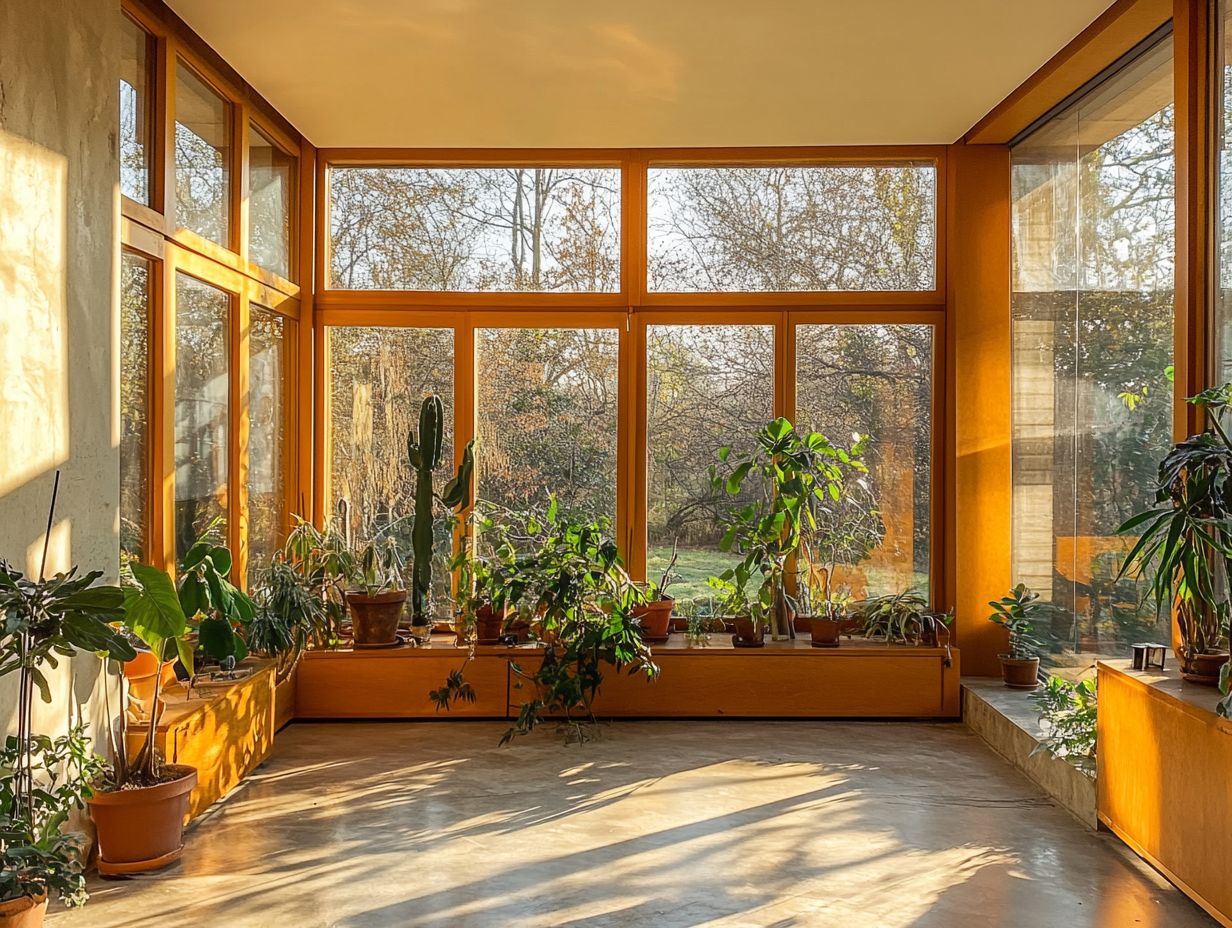
Passive solar design principles require thoughtful planning to optimize sun exposure and materials that store heat in your buildings. This allows for maximum energy collection and distribution. By incorporating these concepts into your architectural design, you can create structures that maintain a perfect balance between natural heating and comfort all year round.
Essential components to consider include the orientation of your building, strategic window placement, and selecting materials that effectively absorb and retain heat. This approach enhances sustainability and significantly reduces your environmental impact.
Maximizing Sun Exposure and Thermal Mass
Maximizing sun exposure and incorporating materials that store heat are essential elements of effective passive solar design. By harnessing these components, you can capture and store solar energy, enabling your building to maintain comfortable temperatures sustainably, regardless of the climate. When you use materials that absorb heat during the day and release it gradually at night, you significantly reduce your reliance on conventional heating systems.
To capture sunlight optimally, pay careful attention to the orientation of your structure; prioritizing south-facing windows is key for harnessing direct sunlight throughout the day. You can further enhance this approach by integrating overhangs or awnings. These features shield your interiors from the intense midday sun while allowing the low-angle winter sun to warm your living spaces.
As for materials that store heat, consider using brick, concrete, or even water barrels, as they excel in storing heat effectively. Implementing these strategies promotes energy efficiency and contributes to environmental sustainability by minimizing energy consumption and reducing your carbon footprint.
DIY Passive Solar Heating Techniques
Ready to harness the sun’s energy? Let s dive into some exciting DIY techniques! DIY passive solar heating techniques allow you to effectively use the sun’s energy in a budget-friendly way. Whether you’re building simple solar water heaters or incorporating thermal collectors, these methods offer sustainable solutions for heating water and air in your home.
By using readily available materials and embracing innovative designs, you can create efficient heating systems that not only reduce your energy bills but also elevate your comfort.
Passive Solar Windows and Collectors
Passive solar windows and collectors are vital elements in optimizing efficiency of passive solar heating systems. By thoughtfully positioning windows to maximize sunlight entry and employing effective solar collectors, you can greatly enhance your home’s heat retention and energy usage.
There are various types of passive solar windows available, including fixed, operable, and specialized glazing options that can be customized for your specific climate. Fixed windows remain closed, allowing sunlight to flood in while minimizing airflow. Operable windows can be opened for ventilation during the warmer months. High-performance glazing, often treated to minimize heat loss, is crucial for energy ratings; materials like Low-E glass reflect infrared radiation, making a significant impact.
Solar collectors work alongside these windows to capture and convert sunlight into heat, creating an integrated system that can notably reduce your reliance on conventional heating sources.
Thermal Curtains and Shades
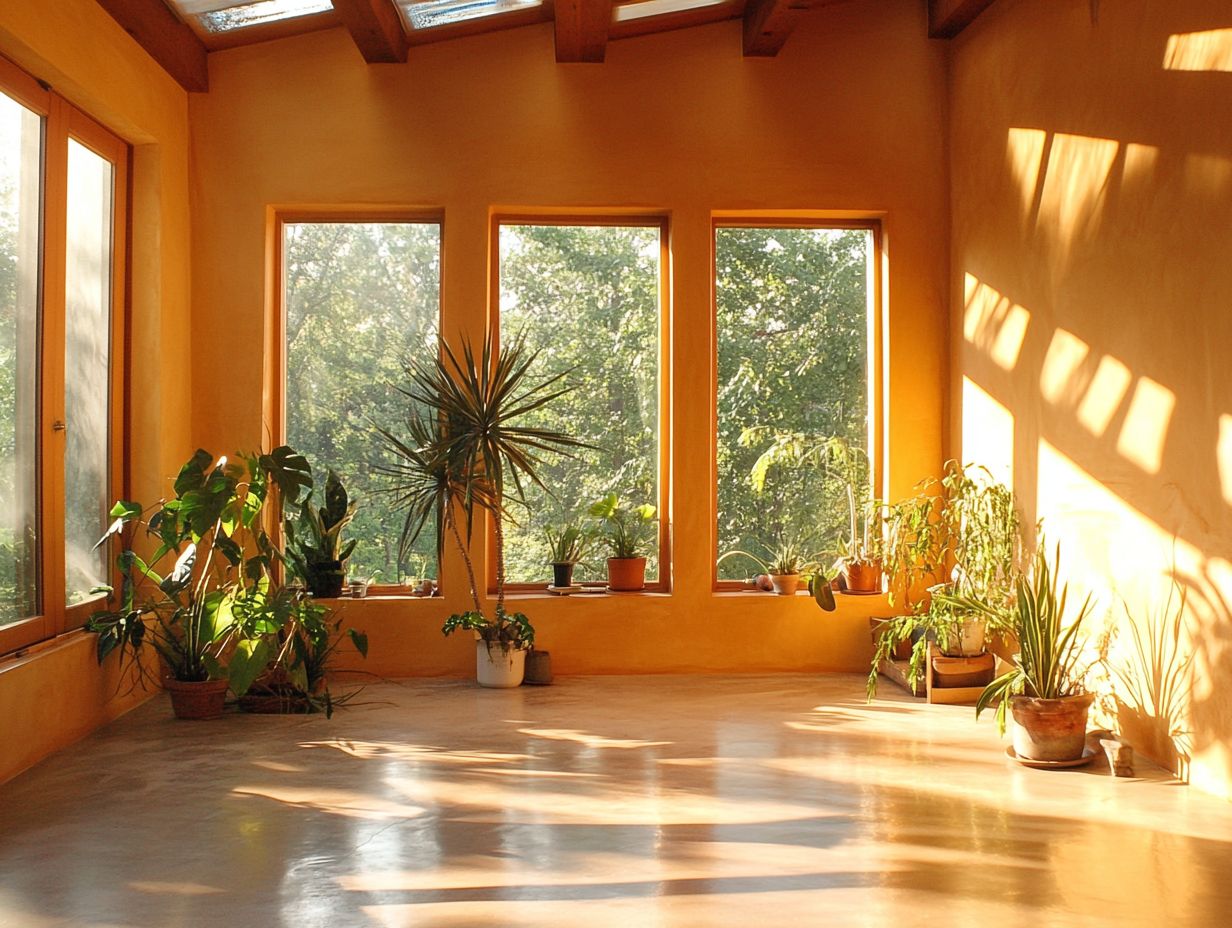
Thermal curtains and shades are essential players in the realm of passive solar design, significantly enhancing your home’s energy efficiency and temperature control. These window treatments retain heat in winter and block excess sunlight in summer, contributing to your overall comfort and lowering your energy costs.
You ll find a variety of thermal curtains and shades available, each specifically crafted to optimize insulation. For example, blackout curtains often boast a dense fabric layer that effectively blocks both light and drafts. Thermal shades, typically made from materials like polyester or cotton, feature an insulating lining. Some options come with reflective backing that redirects heat, perfectly complementing your passive solar heating strategies.
Choose the perfect materials and styles to boost your energy savings and enjoy a cozy home all year round! Implementing guidelines for proper maintenance is also crucial.
Solar Air Heaters
Solar air heaters present a remarkable solution for harnessing passive solar heating. This is your chance to save money and stay warm with an economical heating solution! These systems are not only efficient but can also be easily assembled by DIY enthusiasts, enhancing your energy usage while diminishing your dependence on traditional heating methods.
These heaters operate by capturing sunlight through specially designed panels, which you can construct using materials such as aluminum, glass, and insulated plywood. Whether you prefer a straightforward box collector or a more intricate solar wall system, the design options are versatile, allowing you to customize your project to meet your specific needs and available resources. To learn more about building your own system, check out this guide on how to build your own solar water heater. Materials like black paint and construction-grade materials can further enhance the heat absorption capabilities of your design.
By circulating air through these heated panels, you can enjoy a consistent stream of warm air, significantly slashing your heating bills while elevating your indoor comfort. Incorporating features like thermal mass materials that hold heat and using renewable energy sources can further enhance your system’s performance, promoting sustainable living and contributing to a reduced carbon footprint.
Considerations and Tips for Installation and Maintenance
When contemplating the installation of passive solar heating systems, make sure to check your location and orientation for the best results. You need to consider several key factors, such as maintenance, to ensure optimal performance. Consider using backup systems, like conventional or electric water heaters, for added reliability.
By properly addressing these elements, you can significantly enhance energy efficiency and extend the lifespan of your system. It s essential for you, as an aspiring homeowner, to grasp these considerations fully to maximize the benefits of your investment. Employing additional insulation and considering the environmental impact can further optimize your energy-saving strategies.
Location, Orientation, and Installation Guidelines
Location, orientation, and maintenance are key factors for ensuring the effectiveness of your passive solar heating systems. By selecting a location that basks in ample sunlight and orienting your systems optimally, you can maximize solar energy collection.
Regular maintenance is also crucial for keeping these systems functioning efficiently over time. This includes checking for sediment buildup in water systems.
To truly harness the sun’s energy, it s important to consider the seasonal changes in sunlight patterns, as they significantly influence the angle and intensity of sunlight throughout the year. For example, south-facing windows will capture the most sunlight during winter. Implementing strategic shading can help mitigate heat accumulation in the summer months.
Using materials like PVC for piping and applying thermodynamic principles a method that uses heat and energy flow to improve efficiency can enhance the thermal efficiency of your setup.
You should routinely inspect and clean the heat-absorbing surfaces, ensuring that any obstructions are minimized so your passive solar designs maintain their effectiveness. Understanding your local climate can significantly boost your energy savings! By making thoughtful adjustments, you can greatly enhance energy efficiency and comfort, ultimately making your passive solar systems a sustainable choice that aligns with your environmentally conscious values. For a deeper understanding, check out the basics of passive solar design for homes.
For instance, integrating a tankless water heater or considering a passive solar water heater can provide additional energy savings. Start planning your passive solar heating system today for a more sustainable home!
Frequently Asked Questions
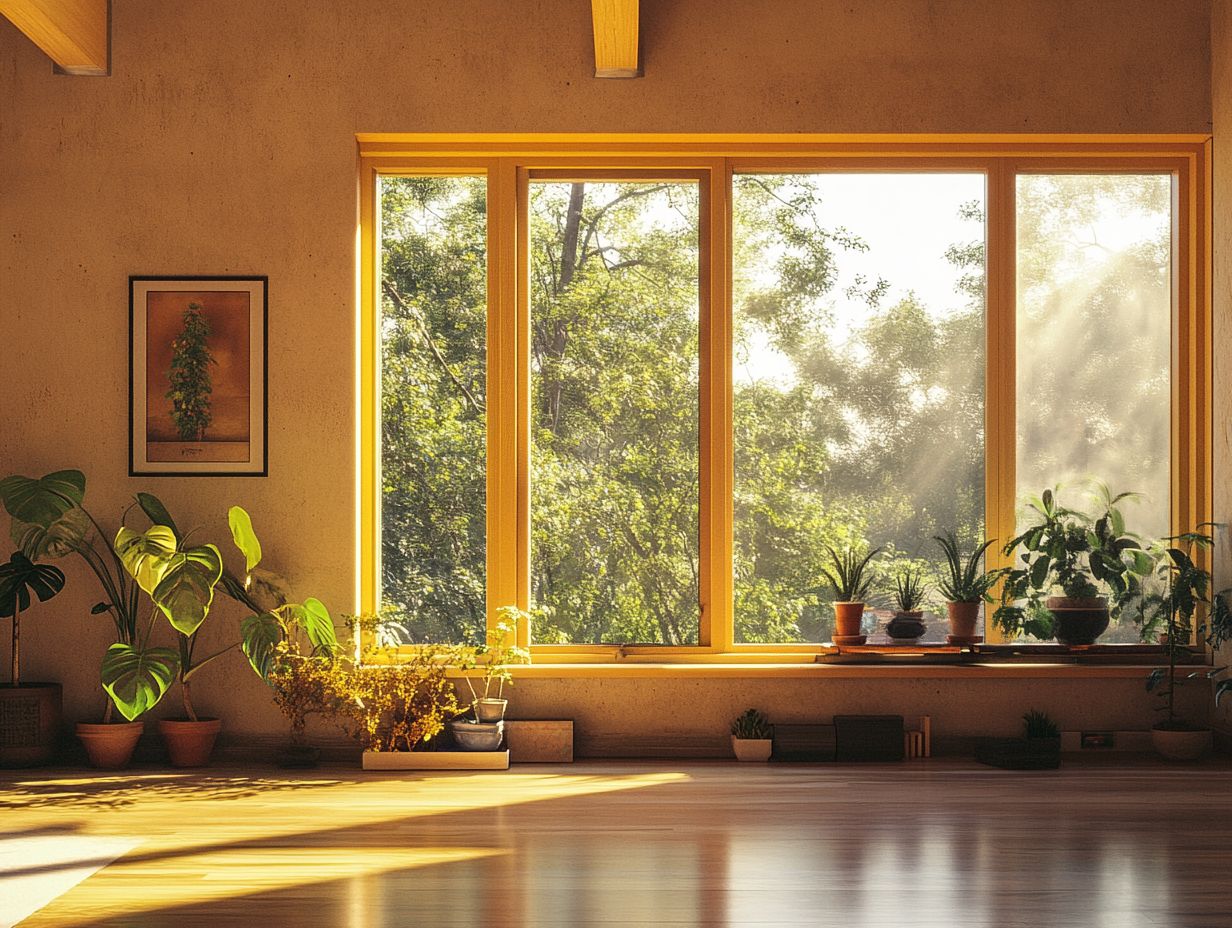
1. What is DIY Passive Solar Heating?
DIY Passive Solar Heating is a technique for using the sun’s energy to heat your home without the use of mechanical or electrical systems.
2. How does DIY Passive Solar Heating work?
DIY Passive Solar Heating works by using materials and design strategies that naturally collect, store, and distribute heat from the sun to warm your home. Common methods include using batch heaters and thermosiphon systems methods that drive the distribution of heat through natural convection without requiring active mechanical systems.
3. What are some common materials used in DIY Passive Solar Heating techniques?
Common materials include south-facing windows, thermal mass materials such as concrete, stone, or water, and insulating materials like straw bales or cellulose. Additionally, utilizing insulated boxes for heat storage can further enhance system efficiency.
4. Is DIY Passive Solar Heating suitable for all climates, including winter months?
While DIY Passive Solar Heating can work in most climates, it is most effective in areas with long periods of sunshine and cool temperatures. Proper design and insulation can make it viable in other climates as well. In colder climates, a backup heating system may be necessary to ensure consistent temperature control.
5. Are there any drawbacks to DIY Passive Solar Heating techniques?
One potential drawback is the initial cost of materials and installation, which can be higher compared to traditional heating systems. Additionally, DIY Passive Solar Heating may require ongoing maintenance, such as checking plumbing and ensuring sediment does not build up in water systems, along with adjustments to distribute heat properly throughout the home.
6. Can I incorporate DIY Passive Solar Heating techniques into an existing home?
Yes, it is possible to retrofit an existing home with DIY Passive Solar Heating techniques. This may involve adding south-facing windows, thermal mass materials, and other design elements to the existing structure. Considerations like integrating a solar shower or pop-can solar panel can also be innovative additions to an existing setup.


